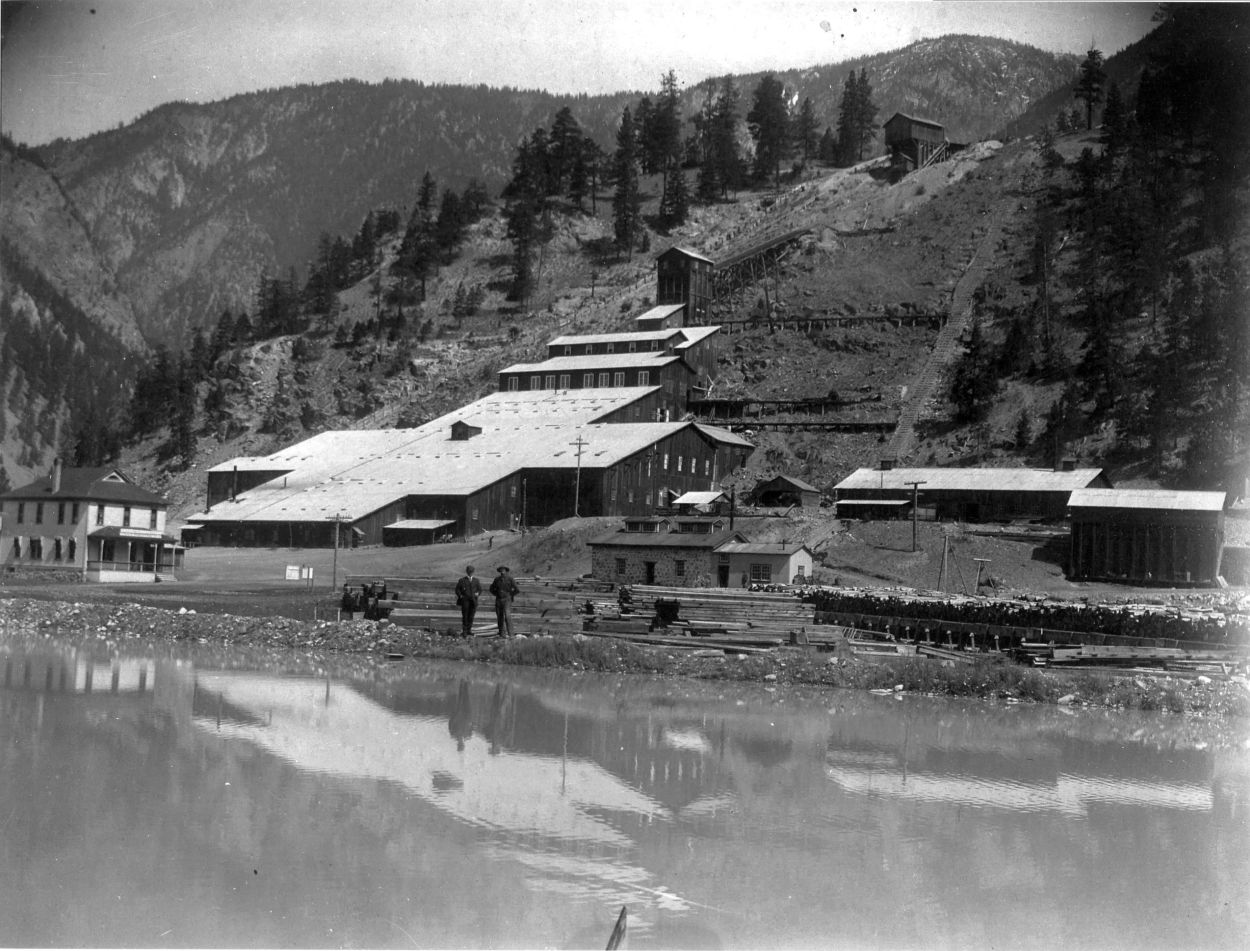 Hedley in the early gold mining days. The large structure just up from the base of the mountain is the Stamp Mill. A nice view of the Similkameen valley. (photo courtesy of the Hedley Heritage Museum ).
Hedley in the early gold mining days. The large structure just up from the base of the mountain is the Stamp Mill. A nice view of the Similkameen valley. (photo courtesy of the Hedley Heritage Museum ).

“The slamming of metal on metal created a din that made the roar of Niagara sound faint as a murmur.” (a mine engineer).
The following is taken from “The Mining and Engineering Record April, 1913” which describes a portion of a complex system.
The mine is at an elevation 6,000 feet above sea level, and the mill is at an elevation of 2,000 feet above sea level.
Ore is delivered from mine to mill by an electric tramway over a mile in length and a gravity tramway about 10,000 feet long in 3 sections, and with a vertical drop of 3,600 feet between the upper and lower terminals.
The gravity tram is built on the ground, follows the slope of the hill, and has 3 rails, except at the central passing station. Its grade varies from 10 percent to 66.8 percent. The cars are 5 ton skips attached to a 43 strand wire cable, the loaded car pulling the empty one back. The tramway handles 150 tons a day.
The mill is constructed to allow the ore to travel through the plant by gravity. Power is brought from 20 Mile Creek by a flume 4 ft. by 5 ft. and 3 miles long. The plant at the mill includes 2 Farrell jaw crushers, from which a belt conveys the ore the full length of an ore bin of 1,000 tons capacity from which the stamps are fed by automatic feeders.
The mill is 40 stamps. The stamps are 1,050 lbs. each, dropping 100 times a minute into Homestake mortars weighing 8,000 lbs. each.
**********
The first stamps were dropped on May 4, 1904, and the Stamp Mill ceased operation in 1955. By mid-1960’s the abandoned Stamp Mill building was becoming an insurance liability. Partial demolition occurred in the late 1960’s, and in 1972 the remainder of the building was deliberately burned. The trestle and tipple were spared.
Although only a portion of the foundations remain, the Stamp Mill is viewed locally as an important aspect of Hedley history and is celebrated each May on “Stamp Mill Day”.

One thought on “Early Hedley Townsite and Stamp Mill”